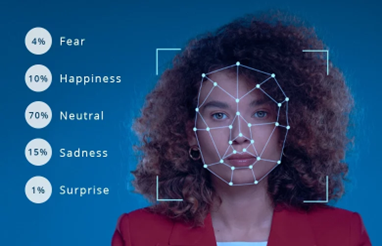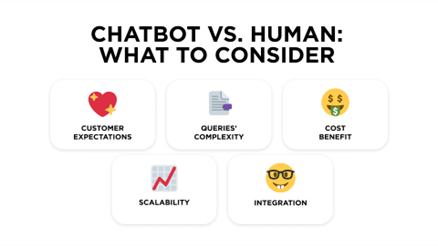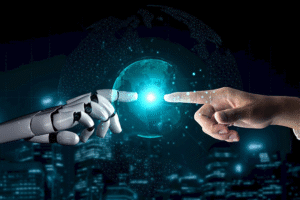Introduction: The Support Showdown We Can’t Ignore
In a hyper-connected world where customers expect instant replies, 24/7 service, and personalized interaction, the race between chatbots and human support has never been more relevant.
Fast forward to 2025, and the lines are blurrier than ever:
- Chatbots have evolved into AI-driven conversational agents capable of understanding context and emotion.
- Human agents are equipped with real-time AI assistance, emotional intelligence, and complex problem-solving capabilities.
But the million-dollar question remains:
Who will win the battle for customer service dominance—Chatbots or Humans?
This 1700+ word in-depth article explores both sides of the debate, comparing their strengths, weaknesses, evolution, and future roles in customer experience (CX). Whether you’re a business leader, tech enthusiast, or customer support professional, this guide will equip you with everything you need to know.


What Are Chatbots and Human Support in 2025?
🤖 Chatbots in 2025
- Powered by advanced NLP (Natural Language Processing), deep learning, and sentiment analysis
- Integrated with CRM, payment gateways, and social platforms
- Used in everything from banking to healthcare, eCommerce to education
Chatbots are no longer basic rule-based tools. They understand user intent, provide real-time data, and resolve a large portion of support queries without human intervention.
🧑💼 Human Support in 2025
- Augmented by AI copilots (e.g., ChatGPT for support)
- Use real-time dashboards, AI-suggested replies, and emotion detection
- Specialized in complex, sensitive, or escalated cases
Human support is becoming more strategic than transactional, focusing on building trust, loyalty, and long-term retention.


Chatbots: Strengths, Superpowers & Limitations
✅ Why Chatbots Are Winning Hearts (and Budgets)
| Advantage | Why It Matters |
| 24/7 Availability | Always-on support, regardless of time zones or holidays |
| Scalability | Handle thousands of conversations simultaneously |
| Speed | Respond instantly with no wait time |
| Cost Efficiency | Reduce support team costs by 40–70% |
| Data-Driven Learning | Improve performance with every interaction |
| Multilingual Support | Break language barriers in global businesses |
| Personalization | Offer tailored solutions via customer behavior insights |

❌ Where Chatbots Still Fall Short
| Limitation | Impact on CX |
| Lack of Deep Empathy | Cannot fully understand emotional nuances |
| Complex Query Failures | Struggle with multi-layered or non-standard issues |
| Script Limitations | Risk of frustrating loops or irrelevant answers |
| Dependence on Data Quality | Garbage in = garbage out |
| Customer Frustration | Users often feel “talking to a wall” with basic bots |

Human Support: Timeless Value in a Digital World
💬 Why Human Agents Still Matter
| Human Skill | Value in Support |
| Empathy | Makes customers feel heard and valued |
| Critical Thinking | Solves unexpected or novel problems creatively |
| Emotional Intelligence | Reads between the lines and adjusts tone accordingly |
| Trust-Building | Boosts loyalty and satisfaction in sensitive scenarios |
| Upselling and Retention | Humans understand context better and pitch appropriately |

🛑 Human Support Challenges
| Drawback | Effect on Experience |
| Limited Availability | Bound by business hours and time zones |
| Higher Costs | Salaries, training, attrition costs |
| Slower Response Times | Longer queues and wait periods |
| Inconsistency | Varies from agent to agent depending on mood, fatigue, etc. |
| Scalability Limits | Can’t handle volume spikes without staffing up |

Chatbots + Humans = The Hybrid Future
The most successful companies in 2025 aren’t choosing between chatbots and humans. They’re combining them for hybrid support ecosystems.
🔄 How Hybrid Support Works
- Chatbot handles first contact – Collects data, answers common queries
- Escalation triggers human handoff – Transfers user with full context
- AI assists human agents – Suggests replies, fetches data, flags tone mismatches
- Post-interaction automation – Chatbot sends surveys, follow-ups, reminders
💡 Benefits of Hybrid Models
- 50% drop in first-response time
- 3x increase in ticket resolution speed
- 2x improvement in customer satisfaction (CSAT)
- Reduced burnout for human agents

Who’s Using Chatbots Effectively in 2025?
🏦 Banking: HDFC Bank’s AI Concierge
Handles 85% of queries from account balance to loan eligibility with WhatsApp-integrated bot.
🛍️ eCommerce: Nykaa’s Personal Beauty Bot
Recommends products based on past purchases, mood, skin type—in seconds.
🏥 Healthcare: Apollo’s Symptom Checker
Assesses symptoms via chatbot before connecting to a telehealth doctor.

When Only Human Support Will Do
😢 1. Emotionally Charged Situations
Refund disputes, service failures, or sensitive medical/emotional issues demand empathy.
🧩 2. Complex Multi-Channel Issues
Problems that span chat, email, phone, and transaction history often require a human to unravel.
📦 3. High-Value Clients or Orders
Premium users or B2B clients expect concierge-style service.

Future Trends: What’s Next in Customer Support?
🔮 1. Emotion AI for Bots
Chatbots are learning to sense user frustration through tone, word choice, and pause length.

🧠 2. Agent Augmentation
Human agents get AI copilots suggesting responses, upsell cues, and mood analysis in real-time.
🔁 3. Conversational Commerce
Bots now close sales, recommend bundles, and process returns via chat.
🔊 4. Voice-Activated Chatbots
Siri-style bots that speak and listen, perfect for cars, homes, and smart devices.
🌍 5. Fully Localized Bots
Bots trained on regional slang, humor, and dialects for native-like interaction.

Chatbots vs. Human Support: Who Wins in What Scenario?
| Scenario | Winner |
| Basic Order Tracking | ✅ Chatbot |
| Refunds + Escalations | ✅ Human |
| New Customer Onboarding | ✅ Hybrid |
| Late-Night Emergency Support | ✅ Chatbot |
| Retention of a Premium Customer | ✅ Human |
| Upselling Accessories During Checkout | ✅ Chatbot with AI assist |
| Handling Angry Customers | ✅ Human |


FAQs: Chatbots vs Human Support in 2025
1. Are chatbots replacing human jobs?
Not entirely. They’re replacing repetitive tasks and helping human agents focus on more meaningful work.
2. Are customers happier with bots or humans?
Depends on the scenario. For fast answers, bots win. For sensitive issues, humans prevail.
3. Can chatbots handle sarcasm or emotion?
In 2025, advanced bots can sense tone, but deep empathy is still human territory.
4. What industries benefit most from chatbots?
eCommerce, banking, education, healthcare, and travel are heavy adopters of AI chatbots.
5. Should small businesses invest in chatbots?
Yes. With tools like Tidio, Drift, and Intercom, even small brands can scale support affordably.

Conclusion: It’s Not About Chatbots vs. Humans. It’s About Customer First.
The future isn’t about choosing sides. It’s about combining the speed and efficiency of bots with the emotional intelligence and problem-solving of humans.
In 2025 and beyond:
- Chatbots will handle the high-volume, low-value tasks.
- Human agents will handle the high-emotion, high-impact moments.
- Brands that understand when to deploy which will earn trust, loyalty, and conversions.
So, who prevails?
The customer.
Because the real winners in this race aren’t bots or people—it’s the customers who get what they need, when they need it, how they want it.

